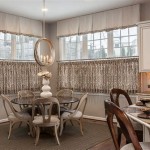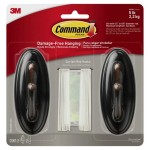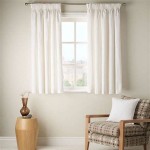What Curtains Keep Heat Out
Window treatments play a significant role in regulating the temperature inside a building. During warmer months, sunlight streaming through windows can drastically increase interior heat, leading to higher energy consumption for cooling systems. Selecting the appropriate type of curtains can effectively combat this issue, minimizing heat gain and creating a more comfortable living environment. This article will delve into the various factors that determine how well curtains keep heat out, exploring different fabrics, colors, and features that contribute to their thermal performance.
The ability of a curtain to block heat transfer depends on its capacity to reflect, absorb, or block solar radiation. The composition of the material, its weave density, and its color all influence these properties. Curtains designed for heat reduction are often specifically engineered to maximize reflection and minimize absorption, preventing the sun's energy from entering the room. Understanding the heat transfer mechanisms and how different curtain attributes affect them is crucial for making informed decisions when selecting window coverings.
Fabric Type and Material Properties
The type of fabric used in curtains has a direct impact on its ability to keep heat out. Different materials possess varying degrees of thermal resistance, affecting their capacity to block or reflect solar radiation. Natural fibers and synthetic materials exhibit different thermal characteristics, influencing their performance in reducing heat gain.
Cotton: As a natural fiber, cotton can be an adequate choice for blocking some sunlight. However, untreated cotton tends to absorb heat and offers limited insulation. Thicker cotton fabrics, such as duck cloth or canvas, provide somewhat better heat reduction compared to lighter weaves. Cotton curtains can be effective in reducing glare, but their thermal performance is significantly enhanced when combined with a thermal lining.
Linen: Linen is another natural fiber often chosen for its aesthetic appeal. Similar to cotton, linen offers moderate sun protection and can create a breezy, comfortable ambiance. However, linen is relatively thin and has a lower density, making it less effective than other fabrics in blocking solar heat. Like cotton, linen benefits from a thermal lining to improve its heat-blocking capabilities.
Polyester: Polyester is a synthetic fabric widely utilized for its durability, wrinkle resistance, and affordability. Polyester curtains can provide good heat reduction, especially when woven tightly. Some polyester fabrics are specifically treated to enhance their heat-blocking properties, making them a suitable option for minimizing solar heat gain.
Acrylic: Acrylic fabrics are known for their resistance to fading and degradation from sunlight. This makes them suitable for use in warm, sunny climates. Acrylic curtains can effectively block solar radiation, reducing heat transfer and preserving the interior temperature. They are often used in outdoor settings as well, such as patio curtains, due to their weather-resistant properties.
Blackout Fabrics: Blackout fabrics are specifically designed to block nearly all light and heat from entering a room. These fabrics are often made from a dense weave of synthetic fibers, such as polyester, and may incorporate multiple layers or a foam backing to enhance their light-blocking and insulating capabilities. Blackout curtains are highly effective in reducing heat gain and can significantly lower energy consumption for cooling.
Thermal Linings: Regardless of the primary fabric, adding a thermal lining significantly increases a curtain's ability to block heat. Thermal linings are typically made from materials such as acrylic suede or specialized reflective fabrics. These linings serve as an additional barrier against solar radiation, reflecting heat back outside and preventing it from entering the room. Thermal linings can be added to existing curtains to improve their thermal performance without replacing the entire window treatment.
Color and Reflectivity
The color of a curtain plays a crucial role in determining how well it reflects or absorbs solar radiation. Darker colors tend to absorb more heat, while lighter colors reflect it. Understanding the relationship between color and reflectivity is essential for selecting curtains that effectively minimize heat gain.
Light Colors: Light-colored curtains, such as white, beige, or light gray, are more effective at reflecting sunlight and reducing heat transfer. These colors reflect a larger percentage of the sun's energy back outside, preventing it from entering the room. Light-colored curtains are particularly well-suited for rooms that receive direct sunlight for extended periods.
Dark Colors: Dark-colored curtains, such as black, navy blue, or deep red, absorb a significant amount of solar radiation. While they may provide excellent light blocking, they also tend to trap heat, which can increase the interior temperature. Dark-colored curtains are generally not recommended for maximizing heat reduction, unless they are paired with a light-colored thermal lining.
Reflective Backings: Some curtains incorporate a reflective backing, typically made from a metallic or white coating, to enhance their heat-blocking capabilities. These reflective backings are designed to bounce solar radiation away from the window, preventing it from being absorbed by the fabric. Curtains with reflective backings are highly effective in reducing heat gain, regardless of the color of the fabric on the room-facing side.
When choosing curtain colors, consider the orientation of the windows and the amount of sunlight they receive. Windows facing south or west typically receive the most intense sunlight and benefit most from light-colored or reflective curtains. Windows facing north or east receive less direct sunlight, so the color of the curtains may be less critical for heat reduction.
Construction and Additional Features
Beyond the fabric and color, the construction and additional features of curtains can also contribute to their ability to keep heat out. Elements like weave density, pleating, and the inclusion of specific insulation features can significantly impact a curtain's thermal performance.
Weave Density: Tightly woven fabrics provide better heat reduction compared to loosely woven fabrics. A dense weave reduces the amount of sunlight that can penetrate the curtain, minimizing heat transfer. When selecting curtains, opt for fabrics with a tight weave, such as canvas or heavy-duty polyester, to maximize their effectiveness in blocking solar radiation.
Pleating and Fullness: The amount of pleating or fullness in a curtain can also affect its thermal performance. Curtains with ample pleating create additional layers of fabric, which help to insulate the window and reduce heat transfer. The extra fabric provides a barrier against solar radiation, preventing it from entering the room. Generously pleated curtains also create a more aesthetically pleasing appearance.
Insulated Curtains: Insulated curtains are specifically designed with multiple layers of fabric and insulation to provide maximum heat reduction. These curtains often feature a face fabric, a layer of insulation (such as batting or foam), and a backing fabric. The layers work together to block sunlight and reduce heat transfer, creating a comfortable and energy-efficient living environment. Insulated curtains are particularly effective in reducing both heat gain during the summer and heat loss during the winter.
Window Coverage: Proper window coverage is essential for maximizing the effectiveness of curtains in keeping heat out. The curtains should extend beyond the window frame on all sides to prevent sunlight from seeping in around the edges. Additionally, the curtains should reach the floor or windowsill to create a complete barrier against solar radiation. Consider using wider curtain panels or overlapping multiple panels to ensure adequate coverage.
Hardware and Installation: The type of hardware used to hang curtains and the way they are installed can also impact their thermal performance. Use curtain rods that are sturdy and extend beyond the window frame to allow the curtains to fully cover the window. Consider using wrap-around curtain rods or mounting the curtains close to the wall to minimize gaps where sunlight can enter. Additionally, using insulated valances or cornices can further enhance the heat-blocking capabilities of the curtains.
In summary, selecting curtains that effectively block heat involves careful consideration of various factors. Fabric type, color, construction, and additional features all contribute to a curtain's thermal performance. By understanding these elements, individuals can make informed decisions about their window treatments, creating a more comfortable and energy-efficient indoor environment. Investing in high-quality curtains designed for heat reduction can lead to lower energy bills and a more pleasant living space throughout the warmer months. The implementation of these strategies provides a clear pathway to mitigating the impact of solar heat gain and enhancing overall thermal comfort within a building.

The Best Curtains To Keep Heat Out Year Round Shade

The Best Curtains To Keep Heat Out Year Round Shade

Answered Do Thermal Curtains Work Sealed

Do Thermal Curtains Keep Heat Out Time Curtain

Do Blackout Curtains Keep Heat Out Marathon Be

Do Blackout Curtains Help Keep A Home Cool

Do Blackout Curtains Keep Out Heat Time Curtain

Do Blackout Curtains Help Keep The Heat Out

The Best Curtains To Keep Heat Out Year Round Shade

Do Blackout Curtains Help Keep The Heat Out








